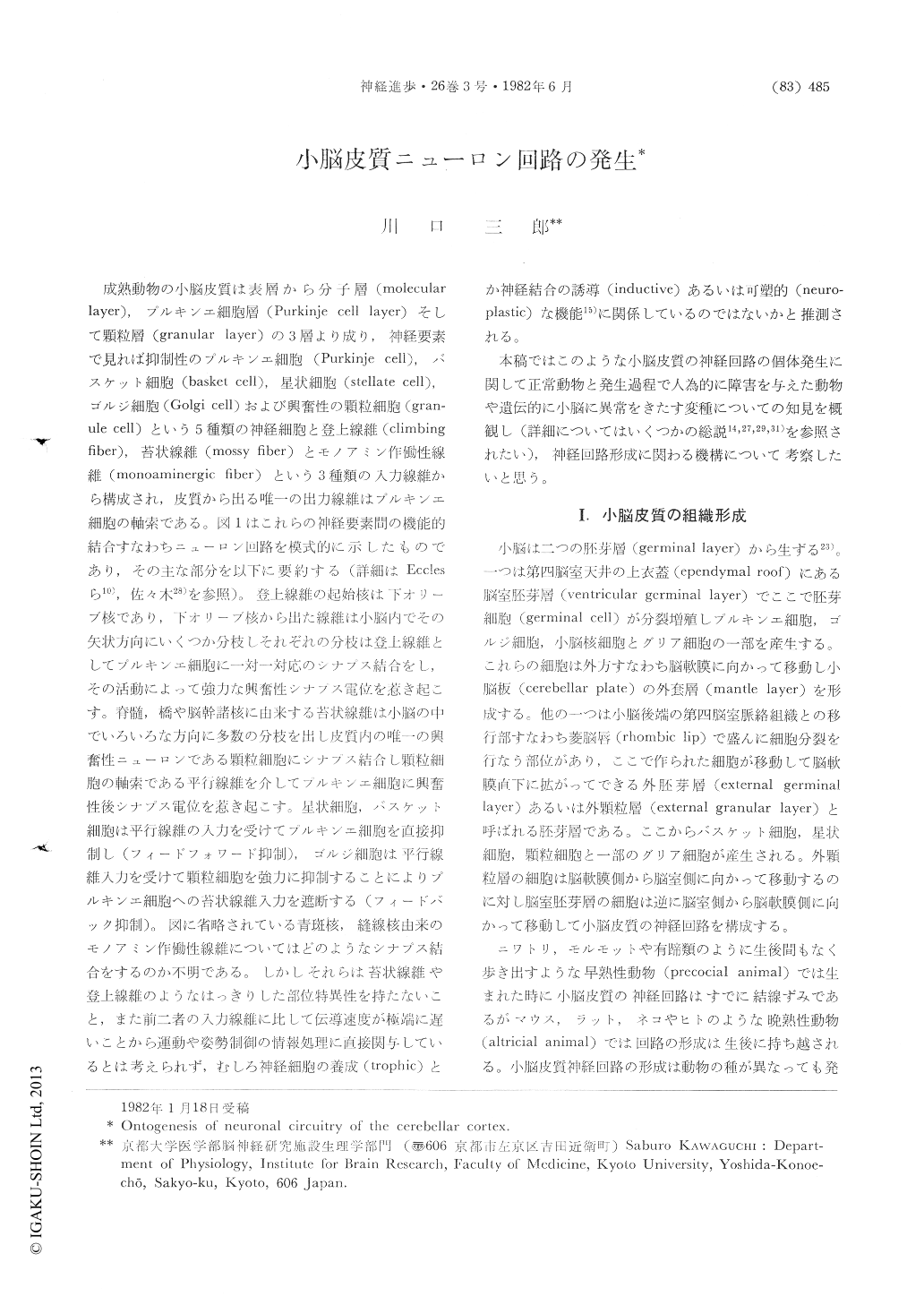Japanese
English
- 有料閲覧
- Abstract 文献概要
- 1ページ目 Look Inside
成熟動物の小脳皮質は表層から分子層(molecularlayer),プルキンエ細胞層(Purkinje cell layer)そして顆粒層(granular layer)の3層より成り,神経要素で見れば抑制性のプルキンエ細胞(Purkinje cell),バスケット細胞(basket cell),星状細胞(stellate cell),ゴルジ細胞(Golgi cell)および興奮性の顆粒細胞(granule cell)という5種類の神経細胞と登上線維(climbingfiber),苔状線維(mossy fiber)とモノアミン作働性線維(monoaminergic fiber)という3種類の入力線維から構成され,皮質から出る唯一の出力線維はプルキンエ細胞の軸索である。図1はこれらの神経要素間の機能的結合すなわちニューロン回路を模式的に示したものであり,その主な部分を以下に要約する(詳細はEcclesら10),佐々木28)を参照)。登上線維の起始核は下オリーブ核であり,下オリープ核から出た線維は小脳内でその矢状方向にいくつか分枝しそれぞれの分枝は登上線維としてフルキンエ細胞に一対一対応のシナプス結合をし,その活動によって強力な興奮性シナプス電位を惹き起こす。
Concerning the mechanisms involved in the formation of neuronal circuitry, this article reviews studies on the development of the cerebellar cortex.
The cerebellar cortex in adult animals has three layers, i.e., the molecular layer, the Purkinje cell layer, and the granular layer. Inthese layers, five types of neurons, i.e., the Purkinje, Golgi, basket, stellate, and granule cells and three types of afferent fibers, i.e., the climbing, mossy, and monoaminergic fibers are connected orderly.

Copyright © 1982, Igaku-Shoin Ltd. All rights reserved.


